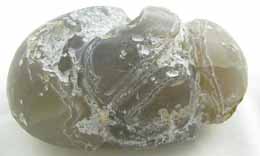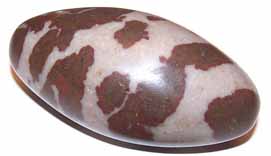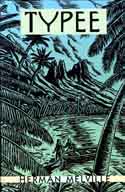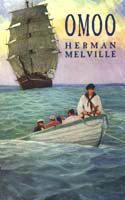Urim and Thummim - Parallel Universes

The meaning of Urim and Thummim in ancient Israelite mythology and LDS scripture is unclear, but that hasn't prevented volumes of learned speculation. Most explanations accept that the stones were used for divination. For example, they were put into a pouch and then pulled out to determine guilt (Urim) or innocence (Thummim) or simply Yes/No. They later became associated with Light and Truth respectively (Lux et Veritas), or Revelation and Truth, which is how they were interpreted by Joseph Smith when he found them in upstate New York. Although they are sometimes described as two river stones fastened together in a spectacles-like contraption, here they are...


Put another way, the top stone (Urim) is female; the bottom stone (Thummim) is male, but that's another story. They were really windows into parallel universes, one held by Melville, one held by Smith. (Truth be told, I have read descriptions of the stones as one black and one white, brown, translucent, egg-shaped, polished, unpolished, made of alabaster and hematite, etc. etc. and the colors are interchangeable.)

In early 1841 when Herman Melville embarked on his journey on the whaling ship Acushnet, he would later look back and say this is when his life began. Running away from women and the maternal some would say… But he carried the Urim with him. At exactly the same time, Joseph Smith was embarking on "spiritual wifery," encouraged by John C. Bennett, with the young women of Nauvoo. Running toward the women and the maternal some would say. Armed with the Thummim.
There are rumors that Smith began this years earlier but now it was in the context of Celestial Marriage, which was a whole different matter, and he was wed first to the rather attractive Louisa Beaman in April of that year. By June the first anti-Mormon convention in Hancock County was underway, now that it was apparent what was going on.
Meanwhile, by July 1841, Melville was in the Marquesas among the Lamanites of the South Pacific just as rumors were spreading wildly of John Bennett’s adulteries (and Smith’s as well). Brigham Young returned to Nauvoo at this time. The propositioning of Nauvoo’s women continued apace with Sarah Pratt chased by Smith in late 1841 and Martha Brotherton chased by Brigham Young in January of 1842.
By May 1842 the rivalry between Joseph Smith and John Bennett had broken into the open, with Bennett excommunicated and then climaxing in July with the publication of Bennett’s inflammatory revelations. The problem with polygamy, it seems, is when women do not have a choice. Only the men do.


By mid-September 1842, Melville is in Tahiti and by April 1843, he is in Hawaii. In July Smith has his famous polygamy revelation and the second phase of scandals commences. Others meanwhile (Millerites), are preaching the imminent Second Coming of Christ, while the Shakers are a-shakin’ (celibately). There is much talk of heavenly spirits coming to earth, bringing visions, children visiting cities in the spirit realm and bringing messages back from the (dead) spirits. Exciting times...
But the End of the World comes: the sorcerer Joseph Smith is murdered in June of 1844. Melville immediately returns to Boston, returning home in early October (beating the October 22 prediction of the revised End of the World) and in early 1845 he begins Typee. With Melville, the sorcerer's apprentice is now settled down, and so the great Mormon Exodus begins in early 1846... Thummim is on the move.
And so on... The cycle ends in 1890 when the Mormons finally banned polygamy, the Thummim disappears and Melville dies the next year. He was buried with the Urim but no one has had the courage to dig it up.
